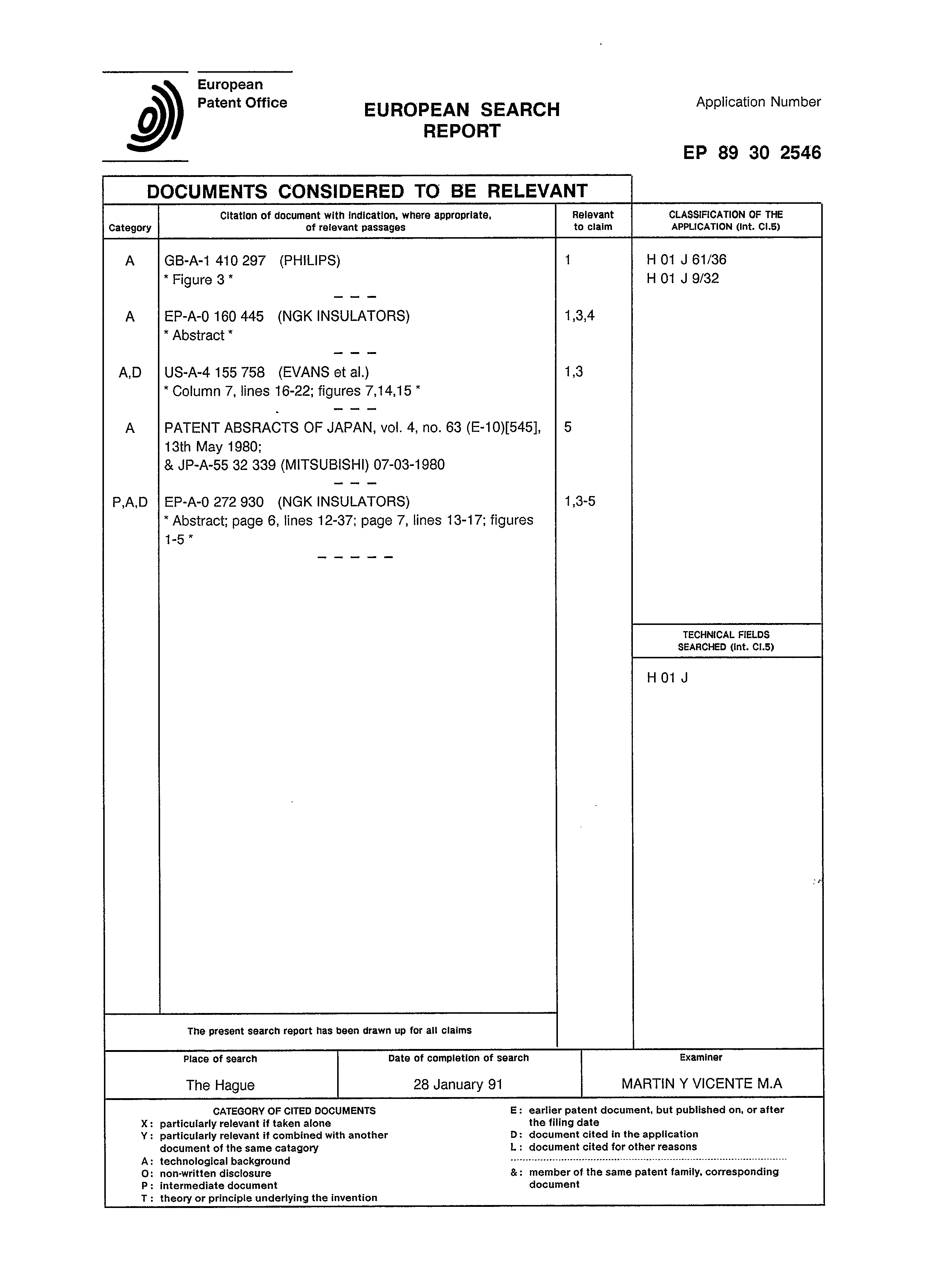| (19) |
 |
|
(11) |
EP 0 333 455 A3 |
| (12) |
EUROPEAN PATENT APPLICATION |
| (88) |
Date of publication A3: |
|
17.04.1991 Bulletin 1991/16 |
| (43) |
Date of publication A2: |
|
20.09.1989 Bulletin 1989/38 |
| (22) |
Date of filing: 15.03.1989 |
|
|
| (84) |
Designated Contracting States: |
|
DE FR GB NL |
| (30) |
Priority: |
16.03.1988 JP 62238/88
|
| (71) |
Applicant: NGK INSULATORS, LTD. |
|
Nagoya City
Aichi Pref. (JP) |
|
| (72) |
Inventors: |
|
- Kariya, Mikio
Nagoya-shi
Aichi-ken, 460 (JP)
- Izumiya, Hirotsugu
Nagoya-shi
Aichi-ken, 467 (JP)
|
| (74) |
Representative: Paget, Hugh Charles Edward et al |
|
MEWBURN ELLIS
York House
23 Kingsway
London WC2B 6HP
London WC2B 6HP (GB) |
|
| |
|
| (54) |
Ceramic envelope device for high-pressure discharge lamp, and method for producing
the same |
(57) A ceramic envelope device for HID lamp, wherein a translucent ceramic arc tube (12)
is closed at opposite end sections thereof by respective end caps (14, 38) which support
respective discharge electrodes on their inner surfaces (18). At least one of the
opposite end sections of the arc tube is sealed with a sealing layer (30), and each
of the sealed end section of the tube includes a first axial portion (33) having a
first inside diameter, and a second axial portion (34) having a second inside diameter
smaller than the first inside diameter and disposed axially inwardly of the first
axial portion. The first and second axial portions define an annular shoulder surface
(36) radially inwardly extending between the first and second inside diameters. The
first axial portion has a cylindrical wall thickness (d1) of 1.0-1.5mm, and the annular
shoulder surface has a radial width (d2) of 0.2-0.8mm. The sealing layer is interposed
between the first axial portion of the arc tube and the corresponding end cap. The
inner surface of the corresponding end cap includes a peripheral portion held in abutting
contact with the annular shoulder surface. The first and second inside diameters are
preferably formed by a stepped-diameter drill.

